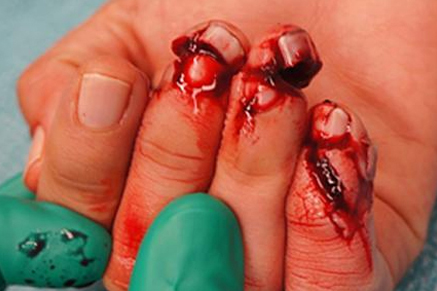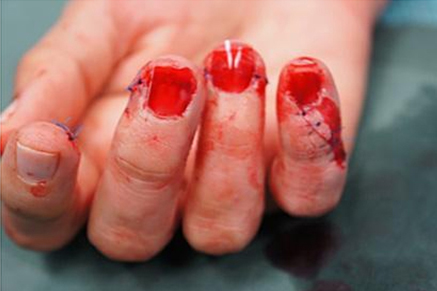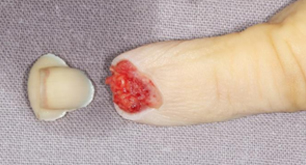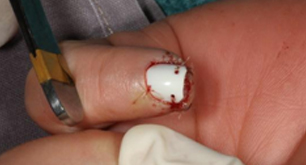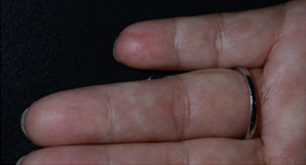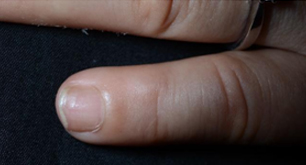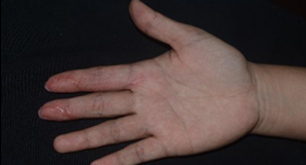Fingertip Injuries
Fingertip Injuries
Fingertip injuries are the most common workplace injuries. These are usually due to crushing by tools or machine parts.
Nailbed injuries
The finger nail is supported by the nailbed. When it is injured, there is a risk of poor healing causing the nail to become deformed and painful, making it difficult to use the finger properly at work. A proper nail bed repair allows optimal healing and a good nail to grow back.
Severe nailbed injuries from grinding machine. These need to be repaired meticulously. The hard fingernail is removed to repair the nailbed and replaced over the repair if it is not broken. If the nail is damaged, an artificial nail is placed over the repair to protect the nailbed while the new nail grows.
Fingertip amputation
Part or all of the fingertip can be amputated by the injury, resulting in a shortening of the finger and disability. To minimize this disability, the fingertip should be reconstructed to preserve as much length and nail as possible. Reconstruction is done by moving skin from the rest of the finger or from another finger to cover the exposed bone. If done properly, a fingertip with good function can be restored in most cases.
Fingertip amputations. Skin from the same finger is moved forward to cover the exposed bone and reconstruct the tips. Alternatively, skin from the back of the finger next to the injured one can be used.
Rehabilitation
Most fingertip injuries are painful and tender for several weeks or months because many nerve endings are injured. Rehabilitation with a special desensitization programme and adequate medication for pain minimizes the time taken for the pain to decrease sufficiently to allow return to normal work. Attention is also given to keeping the finger joints moving to prevent stiffness, as patients tend not to moving to prevent stiffness, as patients tend not to move the finger if it is painful.
If you would like to learn more about the treatment and the possible outcomes, feel free to inquire here.


